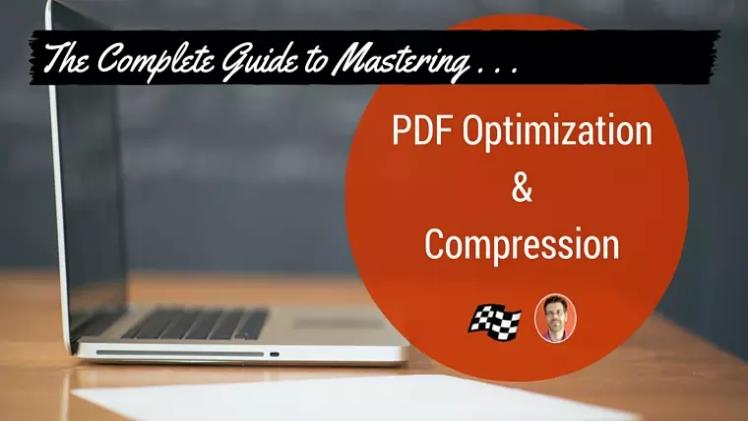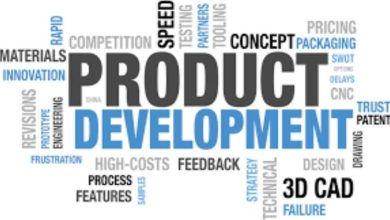Optimizing Marketing Collateral: Strategies for Efficient Word to PDF Compression

In the dynamic landscape of modern marketing, where visual appeal and content delivery are paramount, the efficiency of handling marketing collateral plays a crucial role. This article explores the nuances of optimizing marketing collateral through efficient Word to PDF compression strategies. From maintaining visual integrity to ensuring swift distribution, the journey of marketing materials from Word documents to compressed PDFs is a pivotal aspect of contemporary marketing workflows.
The Visual Impact of Marketing Collateral
Marketing collateral, ranging from brochures and flyers to product sheets and presentations, forms the visual identity of a brand. The intricate design elements, high-quality images, and carefully crafted content contribute to the overall impact on the audience. However, as these materials are often shared across various channels, managing their file sizes becomes imperative for seamless distribution and accessibility.
Word to PDF Conversion: The Initial Step
The process of the simple transition from Word to PDF typically begins with creating marketing collateral using tools like Microsoft Word due to its user-friendly interface and widespread adoption. However, when it comes to distribution and sharing, the PDF format emerges as the preferred choice. PDFs ensure consistency in formatting across different devices and operating systems, making them ideal for marketing collateral that needs to maintain a polished appearance.
The Role of Compression in Marketing Efficiency
As marketing collateral transitions from Word to PDF, efficient compression becomes a key factor. The challenge lies in finding the optimal balance between reducing file size for quick sharing and maintaining the visual quality that is integral to marketing materials. Effective compression strategies not only facilitate faster transmission but also contribute to a positive user experience by ensuring that documents load swiftly, especially in digital marketing channels.
Strategies for Efficient Word to PDF Compression
In an era where information moves at the speed of a click and visual appeal is paramount, the efficient conversion of marketing collateral from Word to PDF has become a strategic imperative. Navigating the delicate balance between file size reduction and the preservation of visual integrity is essential for marketers aiming to deliver impactful content swiftly and seamlessly. This article explores the diverse strategies employed in efficient Word to PDF compression, delving into the intricacies of image optimization, font embedding, content streamlining, and other key techniques that ensure marketing materials maintain their allure while being readily accessible in the digital landscape. As the demand for rapid content dissemination continues to rise, the optimization of Word to PDF conversion emerges as a linchpin in the arsenal of contemporary marketing strategies.
Image Optimization
- Resize images to the dimensions needed for the document, avoiding unnecessary high resolutions.
- Choose appropriate image formats (JPEG, PNG) based on the content and visual requirements.
- Utilize image compression tools to reduce file sizes without compromising quality.
Font Embedding
- Embed fonts used in the Word document to maintain consistent typography in the PDF.
- Opt for font subsets to include only the characters used in the document, reducing file size.
Content Streamlining
- Evaluate and remove redundant or unnecessary content from the marketing collateral.
- Consider using concise language without sacrificing the essence of the message.
Color Space Consideration
- Convert images and graphics to the appropriate color space (RGB for digital, CMYK for print).
- Adjust color profiles to balance visual appeal and file size.
Compression Software and Tools
- Explore dedicated compression tools that are designed for Word to PDF conversion.
- Opt for tools that offer adjustable settings, allowing users to customize compression levels based on their priorities.
Interactive Elements Optimization
- If marketing collateral includes interactive elements, such as hyperlinks or forms, ensure they function seamlessly after compression.
- Test the interactive features in the compressed PDF to guarantee a smooth user experience.
Batch Processing
- Consider batch processing for efficiency when dealing with multiple marketing collateral pieces.
- Batch compression helps maintain consistency in compression settings across various documents.
Quality vs. File Size Tradeoff
- Assess the specific requirements of each marketing collateral piece and find the right balance between file size reduction and visual quality.
- Prioritize visual elements that significantly contribute to the marketing message.
Enhancing Distribution and Accessibility
Efficient Word to PDF compression not only optimizes file sizes but also contributes to improved distribution and accessibility of marketing collateral:
Email Marketing
- Compressed PDFs are ideal for email marketing campaigns as they reduce loading times for recipients.
- Ensure that attachments are quick to download, especially for mobile users.
Website and Online Platforms
- Compressed PDFs are more easily uploaded to websites and online platforms, ensuring a smooth user experience for visitors.
- Faster load times contribute to lower bounce rates and increased engagement.
Print Material Production
- For marketing collateral intended for print, efficient compression facilitates quicker file transfers to print vendors.
- Ensure that the print quality is maintained by choosing compression settings that align with printing standards.
Cross-Platform Compatibility
- Compressed PDFs guarantee cross-platform compatibility, allowing marketing collateral to be viewed consistently on various devices and operating systems.
- This is particularly important in a diverse digital landscape where users access content through different channels.
Future Trends in Marketing Collateral Optimization
Looking ahead, the intersection of technology and marketing collateral optimization promises intriguing developments:
Artificial Intelligence (AI) Integration
- AI algorithms may play a role in automated content optimization, identifying elements that can be compressed without sacrificing quality.
- Predictive analytics may guide marketers in choosing the most effective compression strategies based on audience preferences and engagement patterns.
Blockchain for Content Authentication
- Blockchain technology may be integrated into compressed PDFs to provide an immutable record of the document’s creation and distribution history.
- This can enhance the authenticity and credibility of marketing collateral, especially in industries where trust is paramount.
Augmented Reality (AR) Experiences
- As AR becomes more prevalent in marketing, compressed PDFs may include lightweight AR elements that enrich user experiences.
- Efficient compression will be crucial in ensuring that AR-enhanced marketing collateral remains accessible and quick to load.
Conclusion: Elevating Marketing Collateral in the Digital Era
Optimizing marketing collateral through efficient Word to PDF compression is not merely a technical necessity but a strategic imperative. In an era where attention spans are short and visual impact is crucial, marketers must leverage compression strategies that balance efficiency with quality. As technology continues to evolve, the symbiotic relationship between marketing and compression will shape how brands communicate and engage with their audiences, ensuring that marketing collateral remains a powerful tool in the digital marketing arsenal.





